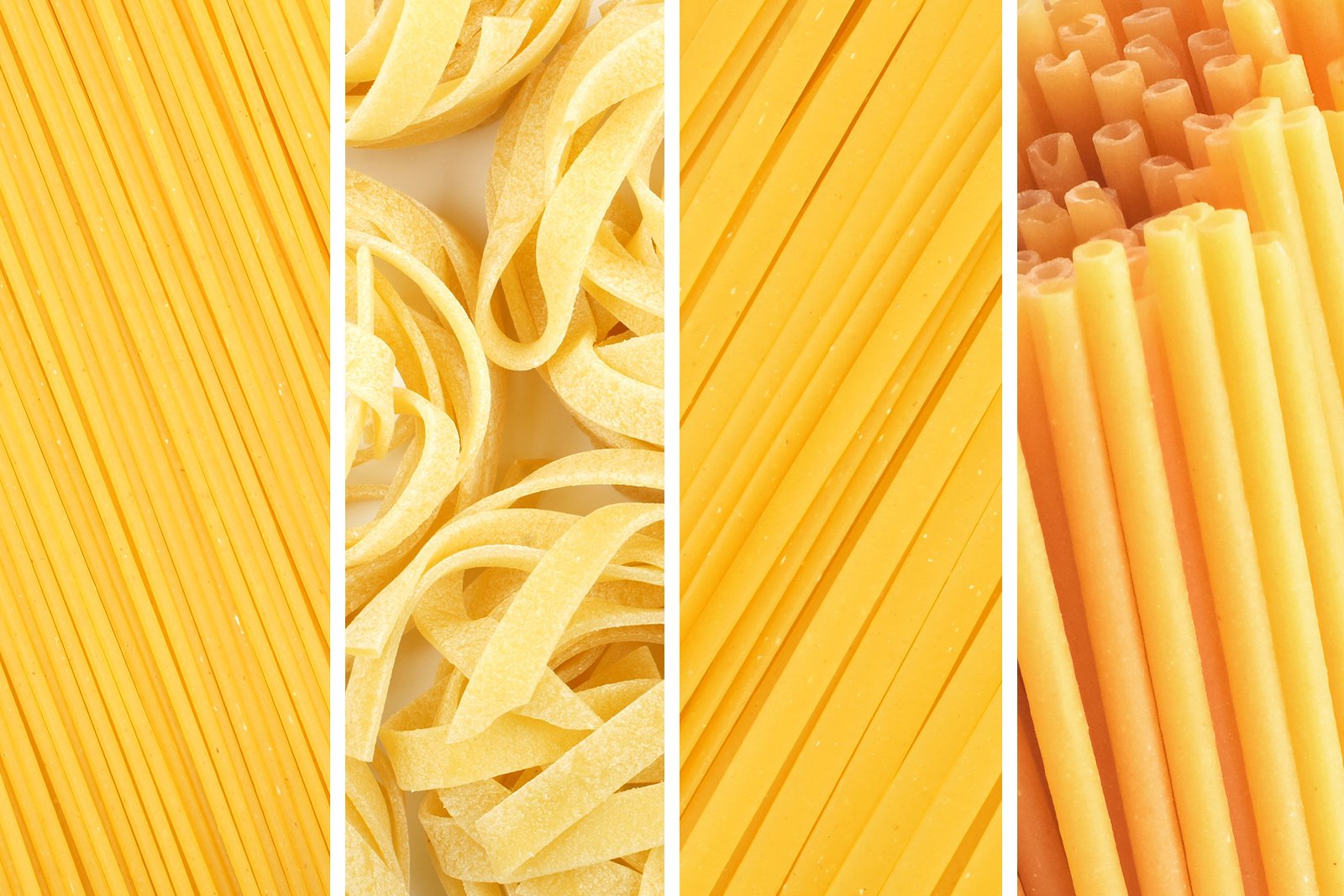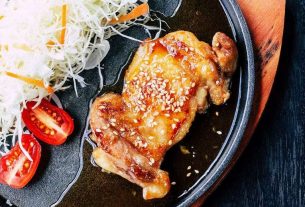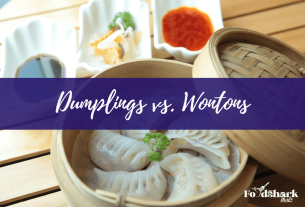Imagine yourself seated at a cozy Italian trattoria, the aroma of freshly cooked pasta wafting through the air.
As you peruse the menu, your eyes land on two intriguing options: linguine and fettuccine.
Curiosity piqued, you wonder about the alluring nuances that set these two pasta varieties apart.
And so, dear reader, allow me to take you on a delectable journey exploring the subtle distinctions between linguine and fettuccine.
linguine vs fettuccine
Linguine and fettuccine are two types of pasta that have differences in shape, ingredients, density, and flavor intensity.
Linguine noodles have a distinctive elliptical shape, similar to spaghetti but thicker, while fettuccine is longer and thicker with a flat, ribbon-like shape.
Linguine is lighter and thinner than fettuccine and is often cooked in lighter sauces, while fettuccine can handle heavier sauces and is often cooked with creamy, cheesy sauces.
Linguine originates from Genoa and is often paired with light pesto sauces or seafood, while fettuccine is known for the alfredo style of cooking but is also used in carbonara and bolognese dishes.
The choice between linguine and fettuccine depends on the dish being cooked, with traditional pasta chefs recommending fettuccine for alfredo-style dishes and serving linguine with pesto or seafood.
Key Points:
- Linguine and fettuccine are different types of pasta with distinctions in shape, ingredients, density, and flavor intensity.
- Linguine has an elliptical shape resembling spaghetti but thicker, while fettuccine is longer and thicker with a flat ribbon-like shape.
- Linguine is lighter and thinner, suited for lighter sauces, while fettuccine can handle heavier sauces like creamy and cheesy ones.
- Linguine is commonly paired with light pesto sauces or seafood due to its origin in Genoa, while fettuccine is known for alfredo-style cooking and is used in carbonara and bolognese dishes as well.
- The choice between linguine and fettuccine depends on the dish being cooked, with fettuccine often recommended for alfredo-style dishes and linguine for pesto or seafood-based recipes.
- Traditional pasta chefs have specific recommendations for using linguine and fettuccine based on their characteristics and flavors.
linguine vs fettuccine – Watch Video
💡
Pro Tips:
1. Linguine and fettuccine may look similar, but one key difference lies in their thickness. Linguine is typically thinner than fettuccine, making it more delicate and versatile for various sauce pairings.
2. Did you know that both linguine and fettuccine originated from central Italy? Linguine hails from the coastal region of Liguria, while fettuccine originated in the central region of Lazio, specifically in Rome.
3. While linguine is often associated with seafood dishes, such as linguine and clam sauce, fettuccine is commonly used in rich and creamy pasta dishes like fettuccine Alfredo. The wider and thicker texture of fettuccine allows it to hold up well against heavier sauces.
4. The word “linguine” is derived from the Italian word “lingua,” which means “tongue.” This pasta shape was named linguine due to its resemblance to a small flat tongue. On the other hand, “fettuccine” comes from the Italian word “fettuccia,” meaning “small ribbon” or “little strip.”
5. Both linguine and fettuccine are made from the same base ingredients of durum wheat semolina and water. However, the key distinction lies in their shaping process. Linguine is formed by extruding the dough through a die with small holes, creating its characteristic elliptical shape, while fettuccine is created by cutting wider ribbons from a rolled-out sheet of pasta dough.
Shape And Its Impact On Taste
The shape of pasta has always played a crucial role in Italian cuisine, impacting the taste and overall authenticity of a dish. Linguine and fettuccine, two popular types of pasta, have distinctive shapes that differentiate them from one another. This distinction ultimately affects the way they hold sauces and flavors, making them unique in their own right.
Importance Of Matching Pasta With Sauce
For food enthusiasts and Italians alike, using the right pasta with the right sauce is of utmost importance. There is a deep-rooted belief that specific pasta shapes complement certain sauces better than others, enhancing the overall flavor experience. Understanding the differences between linguine and fettuccine can help food lovers create an authentic and delicious pasta dish, as they can make informed choices about which type of pasta works best with a particular sauce.
Linguine is a long, flat pasta that resembles a small, narrow ribbon. It is often paired with seafood-based sauces, such as clam sauce or lemon-garlic shrimp. This shape allows the sauce to cling to the pasta strands, ensuring that every bite is filled with flavor. If you want to create a delicate and elegant pasta dish, linguine is an excellent choice.
On the other hand, fettuccine is a wider and thicker pasta, resembling a ribbon. This shape is well-suited for creamy and rich sauces, like Alfredo or carbonara. The width of fettuccine allows it to hold up against heavy sauces, providing a satisfying and indulgent dining experience. If you are looking for a comforting and hearty pasta dish, fettuccine is worth considering.
In conclusion, the choice between linguine and fettuccine depends on the type of sauce you want to pair it with. Remember to consider the texture and thickness of the sauce when selecting your pasta, as it can greatly impact the overall taste and enjoyment of the dish. By making informed choices and experimenting with different pasta shapes, you can elevate your pasta dishes and delight your taste buds.
Useful tips for pairing pasta shapes with sauces:
- Linguine: pairs well with seafood-based sauces, such as clam sauce or lemon-garlic shrimp.
- Fettuccine: works best with creamy and rich sauces, like Alfredo or carbonara.
“The right pasta shape can truly elevate a sauce and bring out the best flavors.”
Benefits Of Knowing Linguine Vs Fettuccine Differences
Knowing the distinctions between linguine and fettuccine empowers aspiring cooks and pasta enthusiasts to explore a range of possibilities when creating their dishes. With this knowledge, one can craft a meal that not only tastes delicious but also speaks to the rich heritage of Italian cuisine. By understanding the specific characteristics of each pasta type, individuals can elevate their culinary skills and impress others with their ability to create authentic Italian flavors.
Linguine: Distinct Elliptical Shape
Linguine noodles are distinctively identifiable due to their oval shape, similar to spaghetti but slightly thicker.
-
Linguine is versatile and can be the main component in numerous pasta dishes.
-
Its elongated shape makes it adept at holding sauces, resulting in a balanced and flavorful experience with every bite.
The name “linguine” comes from the Italian term for “Little Tongues”, highlighting its long and slender presentation.
“Linguine noodles are easily identifiable due to their distinctive elliptical shape. Similar to spaghetti but slightly thicker, linguine has a versatility that allows it to be the star of many pasta dishes. Its elongated shape contributes to its ability to hold sauces well, ensuring an even distribution of flavors with each bite. The name “linguine” itself is derived from the Italian word for “Little Tongues,” emphasizing the long and slender nature of the pasta.”
Linguine’s Origins And Meaning
Originating from the Liguria region of Italy, linguine has a rich heritage that speaks to its connection with Italian cuisine. The name “linguine” pays homage to the traditional shape of the pasta, resembling tiny tongues.
The unique culinary traditions of Genoa, a city in Liguria, often incorporate linguine into dishes such as light pesto sauces, showcasing the pasta’s ability to enhance the delicate flavors of fresh herbs and vegetables.
Additionally, seafood linguine dishes are particularly popular, perfectly marrying the subtle sweetness of seafood with the texture and shape of linguine.
To summarize:
–Linguine is a type of pasta originating from the Liguria region of Italy.
-The name “linguine” pays homage to its tongue-like shape.
-Genoese cuisine often incorporates linguine into dishes with light pesto sauces.
-Seafood linguine dishes are popular for their combination of seafood and linguine’s texture.
Fettuccine: Longer And Thicker With Ribbon-Like Shape
In contrast to delicate linguine, fettuccine is renowned for its longer and thicker strands, boasting a flat, ribbon-like shape. These broader noodles have become synonymous with certain quintessential Italian dishes, capturing the essence of the regions where they originated and are celebrated. The name “fettuccine” stems from the Italian word for “Little Ribbons,” accurately reflecting their wide and elongated structure.
Fettuccine Alfredo – A Famous Dish
When it comes to fettuccine, it is hard to ignore its strong connection with the popular dish called fettuccine alfredo. This dish, which originated in Rome and Tuscany, features fettuccine noodles smothered in a lavish and creamy sauce created with a combination of Parmesan cheese and butter. The decadent and smooth texture of the pasta perfectly complements the velvety and cheesy consistency of the alfredo sauce, offering a truly luxurious and indulgent culinary experience that has enamored countless individuals.
- Fettuccine alfredo is a famous dish originating in Rome and Tuscany.
- The dish consists of fettuccine noodles coated in a rich and creamy sauce made with Parmesan cheese and butter.
- The smooth texture of the pasta complements the velvety, cheesy consistency of the alfredo sauce, creating a luxurious experience.
“The smooth texture of the pasta perfectly complements the velvety, cheesy consistency of the alfredo sauce, resulting in a luxurious and indulgent culinary experience that has captured the hearts and taste buds of many.”
Linguine As A Versatile Substitute
One of the advantages of linguine is its versatility. Due to its similar shape and texture to fettuccine, linguine can be easily substituted for fettuccine or any other ribbon pasta in various dishes. This allows for more flexibility in meal planning and provides a broader range of options for individuals who may have dietary restrictions or simply prefer the lighter taste and texture of linguine.
Linguine Vs Fettuccine: Differences In Thickness And Heaviness
While both linguine and fettuccine belong to the ribbon pasta category, there are noticeable differences in terms of thickness and heaviness. Linguine is lighter and thinner compared to its counterpart, making it an ideal choice for dishes that require a delicate touch. Its slender texture pairs well with lighter sauces and is often cooked in conjunction with vibrant green vegetables, allowing the flavors to shine without overwhelming the palate.
In contrast, the broader and more robust nature of fettuccine can handle heavier sauces. It is frequently featured in dishes with creamy sauces, abundant amounts of cheese, and velvety combinations that create a richer taste profile.
Cooking Styles And Pairings For Each Type
Linguine and fettuccine are both pasta varieties with distinct cooking styles and pairings. Understanding their characteristics can help in selecting the right one for a particular dish.
Linguine:
- Originating from Genoa, linguine boasts a delicate texture that deserves to be highlighted in dishes.
- Traditionally, it is often paired with light pesto sauces, allowing the pasta to absorb the flavors of fresh basil, pine nuts, garlic, and Parmesan.
- Linguine also excels in seafood-based dishes, seamlessly blending with the rich flavors of shrimp, clams, and other marine delicacies.
Fettuccine:
- Fettuccine offers a wider range of cooking styles and pairings.
- Its most renowned association is with the alfredo style of cooking, where the pasta is enriched with a luscious sauce made of butter, cream, and Parmesan.
- The thicker texture of fettuccine enhances indulgence in dishes like carbonara, intensifying the rich creaminess of the sauce.
- Fettuccine also complements bolognese dishes exceptionally well, as the hearty meat sauce clings beautifully to each strand of pasta.
In conclusion, the choice between linguine and fettuccine depends on the dish and taste experience desired. Here are some considerations:
- Linguine:
- Best for lighter and delicate dishes.
- Ideal with light pesto sauces or seafood.
- Fettuccine:
- Suitable for dishes that require creamier and heartier flavors.
- Excellent for alfredo, carbonara, or bolognese dishes.
Both these pasta types provide a splendid exploration of Italian cuisine, with linguine accentuating delicate flavors and fettuccine delivering a luxurious and satisfying culinary experience.
💡
You may need to know these questions about linguine vs fettuccine
What is difference between fettuccine and linguine?
The main difference between fettuccine and linguine lies in their shape. Linguine is narrower, measuring about 1/8″ inch wide, with a slight oval cross section. In contrast, fettuccine is wider, usually about 6mm wide, and has a flat shape. These subtle differences in shape give each type of pasta a distinct texture and mouthfeel when cooked, adding variety to Italian cuisine.
Can I substitute linguine for fettuccine?
Absolutely! Linguine and fettuccine are both long, flat pasta shapes that can be easily substituted for one another in most recipes. While linguine is slightly thinner and flatter than fettuccine, the difference in texture and taste is often minimal, making it a convenient alternative. Whether you’re craving a creamy Alfredo or a zesty marinara sauce, feel free to switch between these pasta options without worrying about compromising the overall dish.
Why use linguine instead of spaghetti?
Linguine offers a delightful alternative to spaghetti due to its unique flat curvature, resulting in a superior sauce-to-pasta ratio. This characteristic makes linguine an excellent choice for dishes like white clam sauce, as it captures and holds onto the flavors more efficiently, enhancing the overall taste experience. By opting for linguine, you are ensuring that each bite is infused with a rich and satisfying sauce, elevating your culinary journey to new heights.
Why use fettuccine noodles?
Fettuccine noodles are an ideal choice due to their wide, flat shape, which allows them to perfectly complement creamy sauces. The larger surface area of fettuccine noodles makes it easier for the rich and indulgent sauces like alfredo or creamy tomato to coat the strands. This ensures that each bite is thoroughly drenched in the luscious, robust flavors, creating a delightful and satisfying culinary experience. Whether it’s the velvety alfredo or a tantalizing vodka sauce, fettuccine noodles provide the perfect canvas for these heavy, creamy sauces to adhere and tantalize your taste buds.
Reference source
https://www.masterclass.com/articles/linguine-vs-fettuccine-guide
https://www.italyfoodies.com/blog/linguine-vs-fettuccine
https://unocasa.com/blogs/tips/linguine-vs-fettuccine
https://www.paesana.com/blog/lets-talk-about-pasta-spaghetti-linguine-fettuccine-bucatini



